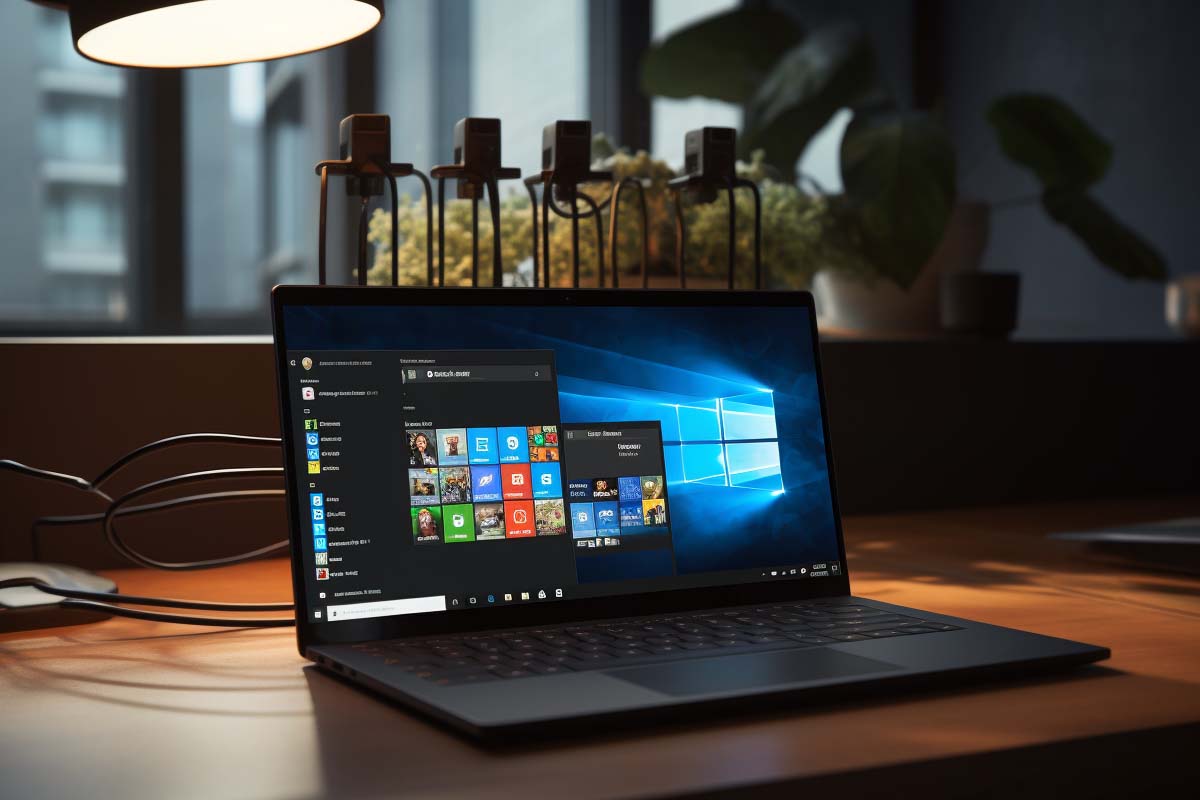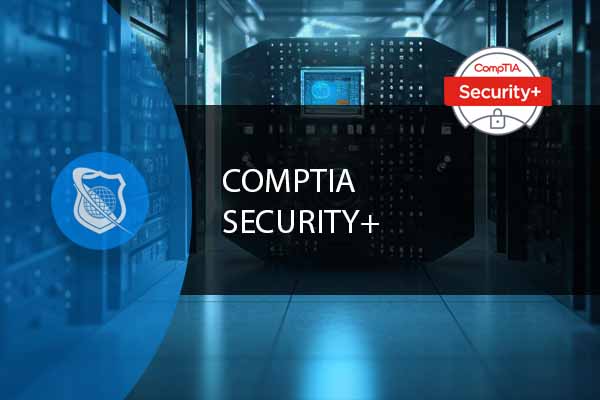Did you know Windows offers a built-in tool to validate file integrity, known as Sigverif (Signature Verification). In the realm of digital security, ensuring the integrity of critical system files is paramount. This guide will walk you through using Sigverif to monitor file integrity, demonstrating its importance in maintaining system security.
What is Sigverif?
Sigverif is a file integrity monitoring tool embedded within Windows operating systems. It’s designed to verify the signatures of critical system files and drivers, ensuring they have not been tampered with or altered. The tool compares the current files on the system with a database of original signatures created at the time of the operating system’s installation.
IT User Support Specialist Career Path
View our comprehensive training series covering all the key elements and certifications needed to successfully excel in an IT User Support Specialist job role.
How to Use Sigverif
- Starting Sigverif: Access Sigverif by typing
sigverif in the Start menu search bar and clicking on the application when it appears.
- Running a Scan: Upon launching, Sigverif offers the option to check all critical system files. By default, it uses a pre-existing database of file signatures for comparison. You can view and manage the log file by clicking on the “Advanced” button. Ensure the default settings are selected, allowing the tool to overwrite any existing log files, and click “Start” to initiate the scan.
- Reviewing the Results: The scan may take a few moments as it verifies every device driver and critical system file against its signature in the database. Typically, no discrepancies are found, but any anomalies will be reported.
- Locating a Test File: For demonstration purposes, you can search for a .txt file within the log to manipulate. This involves finding a folder with a manageable number of files to easily observe the effects of file alteration.
- Editing and Verifying File Integrity: After locating a suitable file (e.g., a license or readme file), create a backup, and then modify the original file. This could involve adding a line of text to the document. Once modified, run Sigverif again to see if it detects the change in file integrity, indicating the file no longer matches its verified signature.
- Restoring File Integrity: To restore integrity, delete the modified file and replace it with the backup. Re-run Sigverif to confirm that the file’s integrity is now verified, demonstrating the file matches its original signature once again.
Secure Your Networks and Prevent Password Breaches
Our robust CompTIA Sec+ course is the perfect resouce to ensure your company’s most valuable assets are safe. Up your security skills with this comprehensive course at an exceptional price.
Importance of File Integrity Monitoring
File integrity monitoring is crucial for maintaining the security and stability of an operating system. By ensuring that critical system files and drivers have not been altered, you protect against unauthorized changes that could compromise system functionality or security. Sigverif is a straightforward yet powerful tool for Windows users to employ in their security toolkit.
Here’s a more detailed explanation of its importance:
Ensuring Security
- Detection of Unauthorized Changes: FIM helps in detecting unauthorized changes to files, directories, and configurations. These changes could be indicators of a security breach, such as malware infection or unauthorized access by an attacker. By monitoring for unexpected modifications, deletions, or additions, FIM provides an early warning system to identify and respond to potential security incidents.
- Mitigation of Insider Threats: Insider threats, whether malicious or accidental, pose significant risks to organizational security. FIM can track and alert on file changes made by insiders, ensuring that any risky modifications are quickly identified and investigated.
Maintaining Compliance
- Regulatory Compliance: Many regulatory frameworks, such as PCI DSS (Payment Card Industry Data Security Standard), HIPAA (Health Insurance Portability and Accountability Act), and GDPR (General Data Protection Regulation), require organizations to ensure the integrity of sensitive data. FIM is a key technology that helps organizations comply with these regulations by providing evidence that the integrity of sensitive information is being actively monitored and protected.
- Audit and Forensic Analysis: FIM solutions log changes to files, making it possible to conduct forensic analysis in the event of a security incident. These logs can help in tracing the sequence of events leading up to a breach, identifying the scope of the impact, and providing compliance auditors with the necessary documentation to demonstrate due diligence.
Enhancing System Reliability
- Prevention of Configuration Drift: Configuration drift occurs when the configuration of a system changes in an unplanned or untracked manner over time. FIM can alert administrators to unintended changes that might compromise system stability, performance, or security, allowing for quick remediation before these issues escalate.
- Protection Against Malware: FIM can detect the presence of malware by monitoring for unauthorized modifications to files and system configurations. This includes the detection of ransomware, which encrypts files and modifies system settings to demand a ransom from the victim.
2025 CompTIA A+ Certification Prep
Get certified with the globally trusted credential for entry-level IT professionals.
The updated 220-1201 & 220-1202 exams deliver cutting-edge skills for today’s tech-driven world—covering essential hardware, software, networking, and security knowledge.
Stay relevant. Stay certified. Start your future in IT today!
Supporting IT Operations
- Change Management: FIM supports change management processes by providing a mechanism to verify that changes to file and configuration states are expected, authorized, and documented. This ensures that only approved modifications are made, reducing the risk of errors that could lead to system outages or vulnerabilities.
- Baseline Security Posture: FIM helps organizations establish and maintain a secure baseline posture. By continuously monitoring for deviations from a known good state, FIM ensures that systems remain secure, compliant, and within operational standards.
In summary, File Integrity Monitoring is a foundational security practice that helps organizations detect and respond to threats, comply with regulatory requirements, enhance system reliability, and support effective IT operations. Its importance cannot be overstated in today’s dynamic and complex IT environments, where the integrity of data and systems is constantly under threat.
Conclusion
Sigverif demonstrates the importance of file integrity in maintaining a secure and stable system environment. Whether you’re a system administrator or a casual user, understanding how to use such tools can significantly enhance your system’s security posture. Through the steps outlined above, users can effectively monitor and restore the integrity of their system files, safeguarding against potential threats and ensuring the smooth operation of their Windows OS.
Frequently Asked Questions About File Integrity Monitoring
What is File Integrity Monitoring (FIM) and how does it work?
File Integrity Monitoring is a security process that involves continuously tracking changes to files, configurations, and directories to ensure they have not been altered in an unauthorized manner. It works by creating a baseline of approved configurations and file states using cryptographic checksums. FIM systems then continuously monitor these elements for alterations, comparing current states against the baseline. Any detected changes trigger alerts for further investigation, enabling organizations to respond quickly to unauthorized modifications, potential security threats, or compliance violations.
Why is File Integrity Monitoring critical for compliance?
Many regulatory standards and frameworks, including PCI DSS, HIPAA, and GDPR, require stringent data protection measures, which include ensuring the integrity of sensitive data. FIM is critical for compliance because it provides a mechanism to detect unauthorized changes to protected data, system files, and configurations. This capability not only helps in preventing data breaches but also provides the audit trails necessary for demonstrating compliance with these regulatory requirements during audits.
Can File Integrity Monitoring help prevent malware and ransomware attacks?
Yes, FIM can play a significant role in the early detection of malware and ransomware attacks. By monitoring for unauthorized changes to files and system configurations, FIM systems can alert administrators to the presence of malware that may attempt to modify system files or ransomware that encrypts files for extortion. Early detection allows organizations to respond promptly to mitigate the impact of such attacks.
How does File Integrity Monitoring fit into a broader cybersecurity strategy?
FIM is a component of a layered cybersecurity strategy that includes firewalls, intrusion detection systems (IDS), anti-virus software, and more. It complements these tools by providing an additional layer of defense focused on the integrity of files and configurations. FIM enhances security posture by ensuring that any changes to critical system components are detected, documented, and analyzed, helping to prevent security breaches and ensure system reliability.
What challenges do organizations face in implementing File Integrity Monitoring, and how can they be addressed?
Implementing FIM comes with challenges, such as managing the volume of alerts generated and distinguishing between benign and malicious changes. To address these challenges, organizations can:
Prioritize Monitoring: Focus on monitoring critical files and systems that house sensitive information or are essential to business operations.
Tune and Customize Alerts: Adjust FIM settings to reduce false positives by customizing the sensitivity and criteria for alerts based on the organization’s unique environment and risk profile.
Integrate with Other Security Tools: Combine FIM with other security systems to correlate data and provide context, making it easier to identify genuine threats.
Leverage Automation: Use automation for responding to common types of alerts and for managing the change approval process, thus reducing the workload on IT staff and speeding up response times.
By addressing these challenges, organizations can effectively implement FIM as a vital part of their security and compliance strategy.














